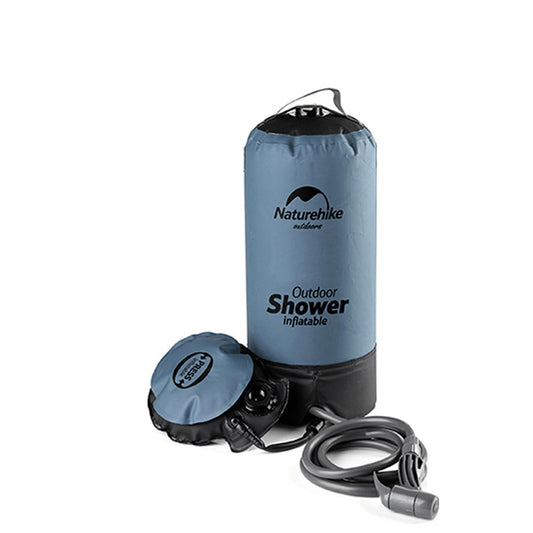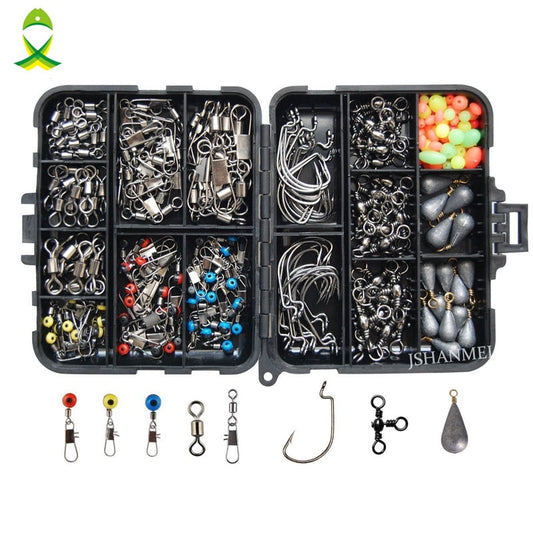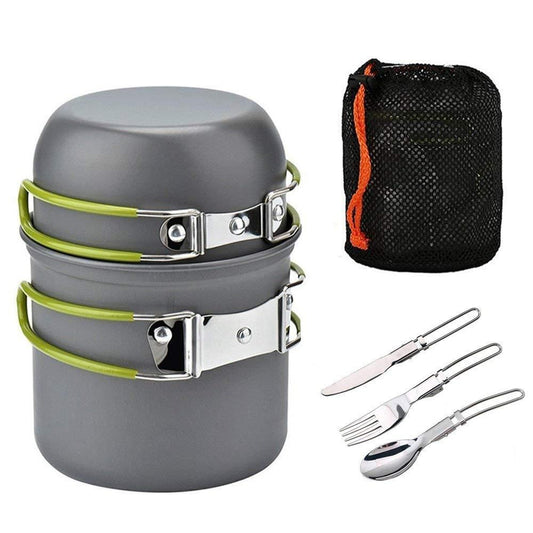
10 Things To Plant In The Fall To Harvest In Winter
Share
Embrace the approaching cold months and nurture your winter garden. Plant these 10 frost-resistant vegetables in the fall, and indulge in the delight of fresh, seasonal produce. Elevate your self-sufficiency and ensure food security for you and your family.
For those who embrace a homesteader's lifestyle, it's time to prepare for the next gardening phase. Most of us are familiar with the tale of the Ant and the Grasshopper. Well, we need to be the Ant, or else we will be like the Grasshopper regretting that we didn’t plan out our food supply.
It all starts with understanding your local temperatures and selecting the right crops for the zone you live in. Also, to ensure none of your harvest goes to waste and you can enjoy the full benefits throughout the winter, here's a method for long-term food preservation without electricity that doesn't require much of your time and resources.
Join us on this journey to discover how these 10 winter champions can transform your winter meals.

Parsley
Soil temperature for Parsley is usually 85°F (10-30°C). Harvesting of seeds takes around 70-90 days.Why is Parsley a Great Addition to Your Diet?
Parsley is not just a garnish for your dishes; it is a nutritional powerhouse that offers numerous health benefits. This herb is rich in vitamins, minerals, and antioxidants, making it a valuable addition to any diet.
1. High Nutritional Value
Parsley is packed with essential nutrients such as vitamin K, vitamin C, vitamin A, and folate. It also contains minerals like potassium, calcium, and iron. Incorporating parsley into your meals can help you meet your daily nutrient requirements.
2. Supports Digestive Health
The natural compounds found in parsley, such as myristicin and apigenin, have been shown to support healthy digestion. These compounds can help reduce bloating, improve nutrient absorption, and promote regular bowel movements.
3. Anti-Inflammatory Properties
Parsley contains flavonoids and volatile oils that possess anti-inflammatory properties. Regular consumption of parsley may help reduce inflammation in the body, which is linked to various chronic diseases.
4. Boosts Immune System
With its high vitamin C content, parsley can help strengthen your immune system. Vitamin C is known to stimulate the production of white blood cells, which are essential for fighting off infections and diseases.
5. Supports Heart Health
Parsley contains compounds like luteolin and apigenin, which have been associated with cardiovascular health. These compounds may help lower blood pressure, reduce cholesterol levels, and prevent the formation of blood clots.
6. Freshens Breath
Chewing on parsley leaves can help freshen your breath naturally. The chlorophyll in parsley acts as a natural deodorizer, neutralizing bad breath caused by certain foods or bacteria in the mouth.
7. Versatile Culinary Ingredient
Parsley is a versatile herb that can be used in various dishes. It adds a fresh and vibrant flavor to salads, soups, sauces, and marinades. You can also use parsley as a garnish to enhance the visual appeal of your meals.
Incorporating parsley into your diet can provide a range of health benefits, from supporting digestion to boosting your immune system. This humble herb is not only nutritious but also adds flavor and freshness to your culinary creations. So, why not start harvesting parsley and enjoy its many advantages?

Lettuce
Lettuce is also extremely tolerant of extreme cold and can handle 10-28 °F.
Why should you consider growing lettuce in the fall?
Growing lettuce in the fall can be a smart choice for several reasons:
- Extended harvest: By planting lettuce in the fall, you can enjoy a longer harvest season. Lettuce is a cool-season crop that thrives in cooler temperatures, so it will continue to grow even as the days get shorter.
- Higher quality: Lettuce grown in the fall tends to have a better flavor and texture compared to lettuce grown in the summer. The cooler temperatures help prevent the lettuce from becoming bitter and bolting, which can happen in hot weather.
- Less pest pressure: Many common pests that affect lettuce, such as aphids and slugs, are less active in the fall. This means you'll have fewer pest problems to deal with, making it easier to grow healthy lettuce.
- Less watering: Cooler temperatures and increased rainfall in the fall mean you'll spend less time watering your lettuce. This can save you both time and money on your water bill.
How to grow lettuce in the fall
Follow these steps to successfully grow lettuce in the fall:
- Choose the right variety: Look for lettuce varieties that are specifically suited for fall planting. These varieties are more cold-tolerant and will perform better in cooler temperatures.
- Prepare the soil: Before planting, make sure the soil is well-draining and rich in organic matter. Add compost or well-rotted manure to improve the soil's fertility.
- Sow the seeds: Plant the lettuce seeds directly in the garden or in containers. Sow the seeds at the recommended depth and spacing, and water gently.
- Provide protection: To protect the lettuce from frost and cold temperatures, consider using row covers or cloches. These can help create a microclimate that keeps the lettuce warm and extends the growing season.
- Maintain moisture: Keep the soil consistently moist but not waterlogged. Water the lettuce regularly, especially during dry spells.
- Harvesting: Harvest the lettuce leaves when they reach the desired size. Cut the outer leaves and leave the inner leaves to continue growing.
Growing lettuce in the fall for winter harvest offers numerous benefits. Not only will you enjoy an extended harvest season and higher quality lettuce, but you'll also experience fewer pest problems and save on watering. By following the proper techniques for fall lettuce cultivation, you can have a bountiful supply of fresh, crisp lettuce throughout the winter months.

Brussels Sprouts
Brussels sprouts, cabbage, cauliflower, and broccoli thrive in extreme cold, tolerating temperatures as low as 26°F. They're ideal for snow-covered gardens.
Brussels sprouts are a nutritious and versatile vegetable that can be a great addition to your diet. Not only are they packed with essential vitamins and minerals, but they also offer numerous health benefits. In this blog post, we will explore why Brussels sprouts are a fantastic vegetable to plant in the fall and harvest in the winter, providing you with a source of nutritious food in case of an emergency.
Why are Brussels sprouts beneficial?
Brussels sprouts are a member of the cruciferous vegetable family, which includes broccoli, cauliflower, and kale. These vegetables are known for their high nutrient content and potential health benefits. Here are some reasons why Brussels sprouts should be on your plate:
1. Nutrient-rich
Brussels sprouts are a nutritional powerhouse. They are an excellent source of vitamins C and K, which are essential for a healthy immune system and proper blood clotting. Additionally, they contain folate, manganese, and potassium, which play vital roles in various bodily functions.
2. High in fiber
Fiber is an important component of a healthy diet, and Brussels sprouts are an excellent source of it. A high-fiber diet can aid digestion, promote satiety, and help maintain a healthy weight. It can also contribute to heart health by reducing cholesterol levels.
3. Rich in antioxidants
Brussels sprouts are packed with antioxidants, which help protect your cells from damage caused by harmful molecules called free radicals. Antioxidants have been linked to a reduced risk of chronic diseases, such as heart disease and certain types of cancer.
4. Supports gut health
Brussels sprouts are a good source of fiber and contain compounds that can promote a healthy gut. The fiber in Brussels sprouts acts as a prebiotic, providing nourishment for beneficial gut bacteria. A healthy gut microbiome is essential for digestion, nutrient absorption, and overall well-being.
5. Versatile and delicious
Brussels sprouts can be prepared in various ways, making them a versatile addition to your meals. You can roast them, sauté them, or even enjoy them raw in salads. Their slightly bitter taste pairs well with savory flavors, and they can be seasoned with herbs and spices to enhance their natural flavors.
By planting Brussels sprouts in the fall and harvesting them in the winter, you can ensure a fresh and nutritious food source during emergencies. Their long growing season and ability to withstand colder temperatures make them an ideal vegetable for winter gardening.
Brussels sprouts offer a wide range of health benefits and can be a valuable addition to your diet. Their nutrient content, fiber, antioxidants, and gut health-promoting properties make them a superfood worth incorporating into your meals. So why not give Brussels sprouts a try and reap the benefits they have to offer?

Potatoes
These tubers are protected from frost and harsh weather as they grow buried underground. Starting to grow potatoes 4 weeks before the last moments of frost in the Spring can bring in a harvest in 4 weeks.
Potatoes are not just a delicious side dish, they can also be a main source of food for you and your family. In fact, potatoes are one of the most versatile and nutritious vegetables you can find. They are packed with essential nutrients and can be prepared in a variety of ways to suit different tastes and preferences.
Why are potatoes a great source of food?
First and foremost, potatoes are a great source of carbohydrates, which are the body's primary source of energy. They provide a steady release of energy, making them an excellent choice for fueling your daily activities. Additionally, potatoes are low in fat and cholesterol, making them a healthy option for maintaining a balanced diet.
Furthermore, potatoes are rich in vitamins and minerals. They are a good source of vitamin C, which is essential for a healthy immune system. Potatoes also contain potassium, which helps regulate blood pressure, and vitamin B6, which supports brain development and function.
Surviving harsh winters and year-round harvest
One of the remarkable qualities of potatoes is their ability to survive harsh winters. Unlike many other vegetables, potatoes can withstand cold temperatures and continue to grow underground. This makes them an excellent option for year-round harvest, even in regions with long and cold winters.
During the winter months, when fresh produce may be scarce, having a supply of potatoes can be a lifesaver. They can be stored in a cool, dark place for several months without spoiling. This means you can enjoy the nutritional benefits of potatoes even when other vegetables are not readily available.
How easy is it to grow potatoes?
Growing potatoes is surprisingly easy, even for beginners. They can be grown in a variety of climates and soil types, making them a versatile option for home gardening. Here are some simple steps to get started:
- Choose a sunny spot in your garden with well-draining soil.
- Prepare the soil by loosening it and removing any weeds or rocks.
- Cut seed potatoes into pieces, making sure each piece has at least one "eye" or bud.
- Plant the seed potatoes about 4-6 inches deep, with the eyes facing up.
- Water the potatoes regularly, keeping the soil moist but not waterlogged.
- As the plants grow, mound soil around the stems to encourage tuber development.
- Harvest the potatoes when the plants have died back and the skins are firm.
With a little bit of care and patience, you can enjoy a bountiful harvest of fresh, homegrown potatoes.
Potatoes are not only a delicious and versatile vegetable, but they can also be a main source of food for you and your family. They are packed with essential nutrients, can survive harsh winters, and are easy to grow. So why not incorporate potatoes into your diet and enjoy their many benefits?

Beets
With a temperature of 50-80°F (10-26°C). Beet seeds usually take around 40-70 days so plan ahead.
Winter is the perfect time to harvest beets, a versatile and nutritious root vegetable. Not only are they easy to grow, but they also offer a wide range of health benefits. In this blog post, we will explore why beets are a great food source to harvest in winter, discuss their health benefits, and provide tips on how to keep them fresh outside all winter long.
Why are Beets a Great Food Source to Harvest in Winter?
Beets are a cold-weather crop, meaning they thrive in cooler temperatures. In fact, they can withstand frost and even taste sweeter after exposure to cold weather. This makes them an ideal vegetable to grow and harvest during the winter months.
Additionally, beets are a hardy vegetable that can be stored for an extended period. When properly stored, they can last for several months, allowing you to enjoy their freshness throughout the winter season.
Health Benefits of Beets
Beets are not only delicious but also packed with essential nutrients that offer numerous health benefits. Here are some of the key reasons why you should consider adding beets to your winter diet:
1. Rich in Antioxidants
Beets are a great source of antioxidants, which help protect your cells from damage caused by harmful molecules called free radicals. Antioxidants have been linked to a reduced risk of chronic diseases, including heart disease and certain types of cancer.
2. Supports Heart Health
Beets are known to promote heart health due to their high nitrate content. Nitrates are converted into nitric oxide in the body, which helps relax and dilate blood vessels, leading to improved blood flow and lower blood pressure.
3. Boosts Brain Function
The nitrates in beets not only benefit the heart but also enhance brain function. Nitric oxide increases blood flow to the brain, improving cognitive function and potentially reducing the risk of age-related cognitive decline.
4. Enhances Digestive Health
Beets are an excellent source of dietary fiber, which aids in digestion and promotes a healthy gut. Fiber adds bulk to the stool, preventing constipation, and supports the growth of beneficial gut bacteria.
How to Keep Beets Fresh Outside All Winter Long
Proper storage is crucial to keep beets fresh and flavorful throughout the winter season. Here are some tips to help you preserve your harvest:
1. Harvest at the Right Time
Wait until the first frost to harvest your beets. The cold temperatures will enhance their sweetness and improve their storage life.
2. Remove the Tops
Before storing, remove the beet greens, leaving about an inch of the stem attached. This prevents the greens from drawing moisture away from the roots.
3. Store in a Cool and Dark Place
Find a cool and dark location, such as a root cellar or basement, to store your beets. The ideal temperature for beet storage is around 32°F (0°C) with high humidity.
4. Use Proper Containers
Store beets in perforated plastic bags or containers with lids that allow for ventilation. This helps maintain the right level of humidity while preventing excess moisture buildup.
5. Check Regularly
Inspect your stored beets regularly and remove any that show signs of spoilage. This will prevent the spread of rot and ensure the rest of your harvest remains fresh.
By following these simple tips, you can enjoy the delicious taste and health benefits of beets all winter long.
In conclusion, beets are a fantastic food source to harvest in winter. They offer a myriad of health benefits, including antioxidant properties, heart health support, brain function enhancement, and digestive health promotion. With proper storage techniques, you can savor the freshness of beets throughout the winter season.

Mustard
Mustard is a heavy frost tolerant and can handle (28°F and below). Make the best of this by planting mustard so you can enjoy during the winter.
Why Mustard is a Great Option for Winter Harvest
When it comes to winter harvest, mustard is a smart choice to include in your garden. Not only is it a hardy plant that can withstand colder temperatures, but it also offers a range of health benefits and culinary uses. In this blog post, we will explore how to harvest mustard, prepare it for consumption, and discuss the numerous advantages of including mustard in your winter diet.
Harvesting Mustard
Harvesting mustard is a relatively simple process. The best time to harvest mustard greens is when they are young and tender, usually around 30-40 days after planting. To harvest, simply cut the leaves from the outer edges of the plant, leaving the inner leaves to continue growing. This method allows for continuous harvest throughout the winter season.
Preparing Mustard for Consumption
Once you have harvested your mustard greens, it's time to prepare them for consumption. Start by washing the leaves thoroughly to remove any dirt or debris. Next, remove the tough stems and chop the leaves into smaller, bite-sized pieces. Mustard greens can be enjoyed raw in salads or cooked in a variety of dishes such as stir-fries, soups, or sautés.
Health Benefits of Mustard
Including mustard in your winter diet can provide numerous health benefits. Mustard greens are packed with essential nutrients, including vitamins A, C, and K, as well as folate, calcium, and fiber. They are also rich in antioxidants, which help protect against cell damage and reduce the risk of chronic diseases. Additionally, mustard greens have been linked to improved digestion, reduced inflammation, and enhanced immune function.
Mustard is a smart choice for winter harvest due to its hardiness, versatility, and health benefits. By following the simple steps of harvesting and preparing mustard greens, you can enjoy this nutritious and delicious vegetable throughout the winter season. So why not add some mustard to your garden and reap the rewards of this winter superfood?

Winter Herbs
Winter herbs thrive better indoors, providing fresh pickings when needed. Oregano, mint, and thyme are great options. To ensure a steady supply of fresh herbs throughout the winter, consider growing them indoors. Oregano, mint, and thyme are excellent choices that thrive in indoor environments.
Planting herbs in fall for harsh winters can be unpredictable, but don't get discouraged. Keeping winter herbs indoors prevents root rot in extreme cold. During the fall, it can be challenging to predict the outcome of planting herbs for harsh winters. However, it is important not to lose hope.
Indoor gardening has become increasingly popular in recent years, and for good reason. Not only does it add a touch of greenery to your living space, but it also offers numerous health benefits. Oregano, mint, and thyme are excellent choices for indoor environments, as they not only thrive indoors but also provide a range of health benefits. Let's explore why these herbs are a great addition to your indoor garden.
Why Oregano?
Oregano is a versatile herb that is commonly used in Mediterranean cuisine. When grown indoors, oregano thrives in well-drained soil and requires moderate sunlight. Here are some of the health benefits of oregano:
- Rich in Antioxidants: Oregano is packed with antioxidants that help protect the body against damage from free radicals.
- Anti-Inflammatory Properties: The compounds found in oregano have anti-inflammatory effects, which can help reduce inflammation in the body.
- Boosts Immune System: Oregano contains vitamins and minerals that support a healthy immune system, helping you fight off illnesses.
Why Mint?
Mint is a refreshing herb that adds a burst of flavor to both sweet and savory dishes. It is a hardy plant that can thrive in indoor environments with minimal care. Here are some of the health benefits of mint:
- Improves Digestion: Mint has been used for centuries to aid digestion. It can help relieve indigestion, bloating, and stomach cramps.
- Relieves Headaches: The aroma of mint has a calming effect and can help alleviate headaches and migraines.
- Freshens Breath: Chewing on mint leaves or using mint-infused mouthwash can help freshen breath and improve oral health.
Why Thyme?
Thyme is a fragrant herb that is commonly used in cooking and herbal medicine. It is a low-maintenance plant that thrives in indoor environments. Here are some of the health benefits of thyme:
- Antimicrobial Properties: Thyme contains compounds that have antimicrobial properties, making it effective against certain bacteria and fungi.
- Respiratory Health: Thyme has been used for centuries to relieve respiratory conditions such as coughs, bronchitis, and congestion.
- Rich in Vitamins: Thyme is a good source of vitamins A and C, which are essential for maintaining a healthy immune system.
Adding oregano, mint, and thyme to your indoor garden not only provides you with fresh herbs for cooking but also offers a range of health benefits. These herbs are easy to grow and require minimal care, making them perfect for both experienced and novice gardeners. So why not start your own indoor herb garden today and enjoy the many benefits it has to offer?

Carrots
Carrots will do well at 45-85°F (7-30°C) and since it is filled with nutritional benefits are ideal to grow for consumption during the winter season. Seed to harvest takes around 55 days. Tops and roots are both edible. Baby carrots are the easiest to grow
Carrots are not only delicious and packed with essential nutrients, but they are also an excellent choice for a winter harvest. In this blog post, we will explore the reasons why carrots are a good produce to plant in the fall and the benefits they offer for winter consumption.
Why Choose Carrots for Fall Planting?
Carrots thrive in cooler temperatures, making them an ideal vegetable to plant in the fall. The chilly weather actually enhances the flavor of carrots by converting their starches into sugars, resulting in a sweeter taste. Additionally, carrots are a hardy crop that can withstand light frosts, allowing you to enjoy a bountiful harvest even as the temperatures drop.
The Nutritional Powerhouse of Carrots
Carrots are not only a tasty addition to your meals but also a nutritional powerhouse. They are an excellent source of beta-carotene, a pigment that the body converts into vitamin A. Vitamin A is essential for maintaining good vision, promoting a healthy immune system, and supporting cell growth and development.
Furthermore, carrots are rich in dietary fiber, which aids in digestion and helps regulate blood sugar levels. They also contain antioxidants, such as vitamin C and vitamin E, which protect the body against free radicals and reduce the risk of chronic diseases.
Benefits of Winter Harvested Carrots
By planting carrots in the fall for a winter harvest, you can enjoy a fresh supply of this nutritious vegetable throughout the colder months. Winter-harvested carrots have a firmer texture and a sweeter taste compared to those harvested in other seasons. They add a vibrant burst of flavor to soups, stews, and roasted vegetable medleys, making winter meals more enjoyable and nutritious.
Moreover, winter-harvested carrots are a cost-effective option. Instead of relying on store-bought carrots that may have traveled long distances, you can simply step into your garden and harvest your own supply. This not only saves money but also reduces your carbon footprint.
Planting carrots in the fall for a winter harvest is a smart choice for any garden enthusiast. Not only do carrots thrive in cooler temperatures, but they also offer a wide range of nutritional benefits. From their high vitamin A content to their fiber and antioxidant properties, carrots are a valuable addition to any winter diet. So, why not roll up your sleeves, grab some carrot seeds, and get ready to enjoy a fresh and flavorful harvest this winter?

Swiss Chard
With a temperature is around 50-85°F (10-30°C). Seed harvest is around 30-60 days. There are several varieties of Chard and they all do well in the winter.
Swiss chard, also known as silverbeet or perpetual spinach, is a leafy green vegetable that is packed with nutrients. While many people associate gardening with the spring and summer months, there are actually several benefits to growing and harvesting Swiss chard during the winter.
Why should you consider growing Swiss chard in winter?
Growing Swiss chard during the winter months has several advantages. Firstly, Swiss chard is a cold-hardy plant that can withstand frost and even snow. This means that you can continue to enjoy fresh, homegrown greens even when other plants have withered away. Additionally, Swiss chard grows at a slower pace during winter, which can result in sweeter and more flavorful leaves.
Health benefits of Swiss chard
Swiss chard is not only a delicious addition to your meals, but it also offers numerous health benefits. Here are some reasons why you should consider incorporating Swiss chard into your diet:
1. Nutrient-rich: Swiss chard is a nutritional powerhouse, packed with vitamins A, C, and K, as well as minerals like magnesium, potassium, and iron. These nutrients are essential for maintaining a healthy immune system and promoting overall well-being.
2. Antioxidant properties: Swiss chard contains antioxidants that help protect your cells from damage caused by harmful molecules called free radicals. By including Swiss chard in your winter garden, you can ensure a fresh supply of these beneficial antioxidants.
3. Heart-healthy: The high levels of potassium and magnesium found in Swiss chard can help regulate blood pressure and promote cardiovascular health. Including Swiss chard in your winter meals can be a great way to support a healthy heart.
4. Digestive health: Swiss chard is rich in fiber, which aids in digestion and helps maintain a healthy gut. By harvesting Swiss chard from your garden during the winter, you can enjoy the benefits of this fiber-rich vegetable all season long.
How to incorporate Swiss chard into your winter meals
Now that you know the benefits of harvesting Swiss chard from your garden during winter, you may be wondering how to incorporate this versatile vegetable into your meals. Here are a few ideas:
1. Soups and stews: Add chopped Swiss chard leaves to your favorite winter soups and stews for an extra dose of nutrition and flavor.
2. Sautéed side dish: Sauté Swiss chard with garlic and olive oil for a simple and nutritious side dish that pairs well with any winter meal.
3. Salads: Use fresh Swiss chard leaves as a base for your winter salads. Its vibrant colors and crisp texture will add a refreshing element to your plate.
4. Smoothies: Yes, you can even add Swiss chard to your winter smoothies! Blend it with fruits and other leafy greens for a nutritious and energizing start to your day.
By harvesting Swiss chard from your garden during the winter months, you can enjoy a fresh supply of this nutrient-rich vegetable and reap its numerous health benefits.

Parsnips
Seeds can be planted Early September to the 1st week in October (seeds) Soil temperature right around 70°F is the best for seeds to germinate. Do check those seed packets! Each vegetable has a variety.
Why are parsnips valuable for a winter harvest?
Parsnips are a valuable addition to any fall garden because they thrive in cool weather and can be harvested throughout the winter. Unlike many other vegetables, parsnips actually improve in flavor after being exposed to frost. This makes them an excellent choice for those who want to enjoy fresh, homegrown produce even during the colder months.
Health benefits of parsnips
In addition to their delicious taste, parsnips offer numerous health benefits. They are a great source of dietary fiber, which aids in digestion and helps maintain a healthy weight. Parsnips are also rich in vitamins and minerals, including vitamin C, vitamin K, and potassium. These nutrients support a strong immune system, promote bone health, and regulate blood pressure.
Ways to incorporate parsnips into your diet
There are countless ways to enjoy parsnips in your meals. Here are a few ideas:
1. Roasted parsnip fries
Cut parsnips into thin strips, toss them with olive oil, salt, and pepper, and roast them in the oven until crispy. These make a delicious and healthy alternative to traditional French fries.
2. Parsnip soup
Simmer parsnips with onions, garlic, and vegetable broth until tender. Then, blend the mixture until smooth to create a creamy and comforting soup.
3. Parsnip mash
Boil parsnips until soft, then mash them with butter, salt, and a touch of cream. This creamy side dish pairs well with roasted meats or poultry.
4. Parsnip chips
Thinly slice parsnips and bake them in the oven until crispy. These make a tasty and nutritious snack.
Planting parsnips in the fall is a wise decision for any home gardener. Not only do they provide a fresh and flavorful harvest during the winter months, but they also offer a range of health benefits. By incorporating parsnips into your diet, you can enjoy their unique taste and reap the nutritional rewards they provide.
Make sure that you get your planting seeds from a good source so that you will be able to enjoy a Bountiful harvest in the harsh cold winter. Always read the instructions on the packet and follow accordingly.
Some vegetables do well when they are planted late in the fall and can extend to give you a good supply of vegetables. Always take into account the Zone you live in as each Zone has different weather conditions and you need to put your time and effort understanding this.
It is a fulfilling experience to never have to run out of nutritious vegetables even during the winter season. Plan out your Winter garden in the fall. Make a note of what seeds or cuttings you will need and find the most economical way to get the required seeds.
Don’t spend time planting what you or your family don’t enjoy eating. Gardening during any season is a fulfilling experience and is a way to save time and money. Some of the herbs and vegetables also last after the winter has passed and if you have excess you can freeze them or can them for use throughout the year.
You know what you grow and you know that it is organic. Your health and that of your family is first priority, so as I mentioned, do check thoroughly the seed planting instructions on the packets and you will have an abundant harvest in the dead of winter.
If you have any questions, feel free to contact Coach Trina @ Dragoyle.com
























